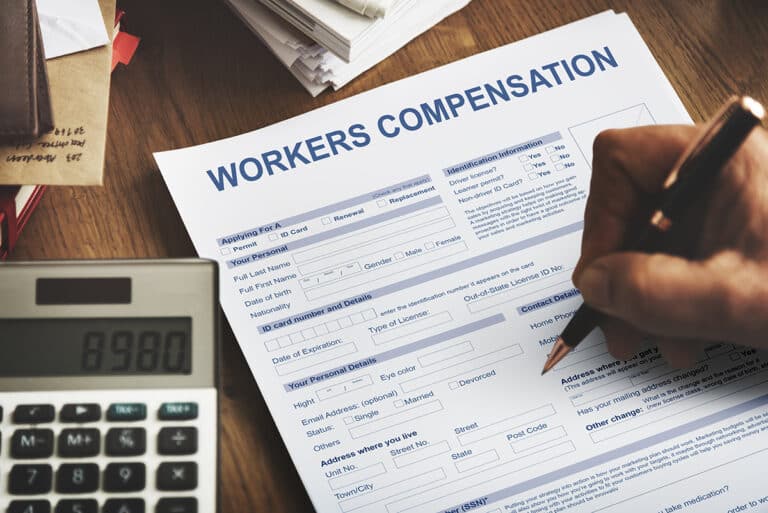When Is an Employee Ready to Return to the Job After Receiving Workers’ Compensation Benefits?
Determining an employee’s readiness to return to work after receiving workers’ compensation benefits can be complex. Employers must evaluate various factors to ensure full recovery and physical capability without further injury risk. This assessment considers the nature of the injury, medical progress, and recommendations from healthcare professionals. Legal implications and responsibilities should also be considered, to ensure compliance and fairness. Open communication and collaboration are crucial. By considering these factors, employers can make informed decisions, fostering a safe work environment for all.
Evaluating the Employee’s Medical Status
The first step in assessing when an employee is ready to return to work is to evaluate their medical status. A healthcare professional should conduct a thorough examination to determine if the employee has fully recovered or if any lingering issues could impair their ability to perform their job. The medical report should provide a detailed analysis of the employee’s condition and offer recommendations on when it might be safe for them to resume their duties. It is important to consider workers’ compensation insurance and workers’ compensation coverage throughout this process.
Medical Benefits
While an employee is on workers’ compensation, they are entitled to certain medical benefits to aid their recovery. These benefits typically include coverage for medical expenses related to the injury, such as hospital stays, surgeries, physical therapy, and any necessary medications. In some cases, they may also cover services like counseling or vocational rehabilitation, if these are deemed necessary for the employee’s recovery and return to work.
Additionally, employees may be eligible for disability benefits, which can provide financial support for lost wages due to a work-related injury. In cases of permanent disability, these benefits can be especially important for ensuring long-term financial stability. Employers must understand the medical care and disability benefits their employees have received, as these factors play a significant role in their recovery and ability to return to work.
Consultation With the Employee
After carefully reviewing the comprehensive medical report, it is crucial to engage in a thorough consultation with the employee regarding their readiness to resume work. This step is especially important in workers’ compensation cases, as it involves considerations of death benefits and permanent partial disability.
By fostering open and transparent communication throughout this process, the employer can gain valuable insights into the employee’s perspective and effectively address any concerns they may have. This approach not only demonstrates the employer’s commitment to their well-being but also contributes to the establishment of a supportive work environment where the employee feels genuinely valued, heard, and supported in their return to work journey.
Implementing a Return-to-Work Program
A well-designed and meticulously planned structured return-to-work program can greatly assist in the transition process, especially in workers’ compensation cases involving permanent disability benefits. This program should be carefully tailored to the unique needs and capabilities of each employee, taking into consideration their specific circumstances. It may involve offering modified duties or part-time work options in the initial stages, allowing employees the opportunity to gradually ease back into their regular work responsibilities as they make a complete recovery. By providing a supportive framework and considering individual circumstances, organizations can ensure a smooth and successful return to work within the workers’ compensation program.
Legal Responsibilities and Implications
In a workers’ compensation case, both the employer and the injured worker have legal responsibilities. Employers must provide a safe work environment and accommodate the worker’s limitations, while the employee must comply with their medical treatment and follow the prescribed return-to-work plan. This collaborative process, involving the employer, employee, and healthcare professionals, aims to ensure a smooth and safe transition back to work after receiving workers’ compensation benefits. It requires careful evaluation, open communication, and a structured return-to-work plan. It also addresses workers’ compensation programs and medical bills.
Ultimate Law Firm Is Here To Help
At Ultimate Law Firm, we specialize in workers’ compensation claims. We understand the intricacies involved and are committed to helping you navigate the legal landscape. Our experienced team will work tirelessly to ensure your rights are protected and that you are fairly compensated. We not only help you get the compensation you deserve but also advocate for your safe and smooth transition back to work. Your safety and well-being are our priority. Trust Ultimate Law Firm to stand by your side throughout the workers’ compensation claim process, ensuring you can return home safely and securely.
Frequently Asked Questions
How much does NYS workers comp pay?
In New York State, workers’ compensation benefits are typically two-thirds of the injured worker’s average weekly wage, up to the current maximum allowable amount.
Do you get a lump sum from workers comp in Texas?
In Texas, workers’ compensation benefits are generally paid every week. However, in some cases, you may have the option to negotiate a lump sum settlement with the insurance company.
How much do you get paid on workers comp in California?
In California, workers’ compensation benefits are usually two-thirds of the injured worker’s gross (pre-tax) weekly wage, subject to the state’s maximum and minimum amounts.
What percentage does workers comp pay in Texas?
In Texas, workers’ compensation typically pays 70% of the injured worker’s average weekly wage, up to a maximum set by the state. If the worker’s wage was under a certain threshold, the compensation percentage may increase to 75%.
Please note that these numbers can vary and are subject to change. Always consult with a legal professional to get the most accurate and up-to-date information.









